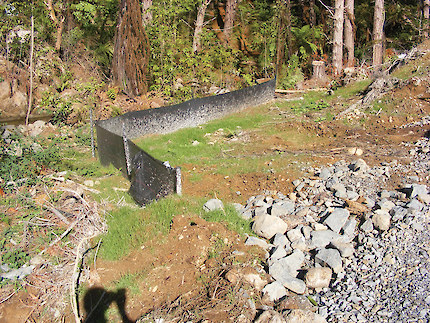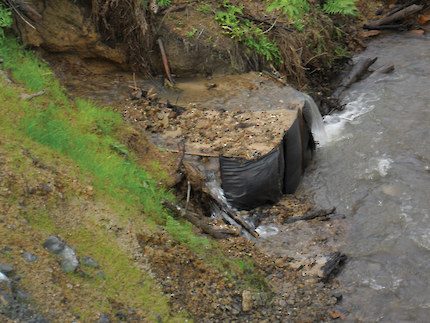Silt fences can reduce sediment movement across the ground into sensitive areas. The fence fabric helps trap coarse sediment. Locate silt fences carefully. They are only a short-term solution until the site stabilises.

- The fence is in a good location below a cut-out but before the stream
- The fence cloth traps most sediment
- Hand-seeded grass is becoming established

- Good fence location below the fill but not in the gully
- Can be cleaned if required
- Wings have been built to stop sediment going around the sides

- The fence is working well, capturing most of the coarse sediment
- Shade cloth traps are less prone to blowout or overfilling because they only trap coarse sediment

- Do not build in places where there is too much water. For example, in a riverbed or ditch
- Fences rapidly fill then fail